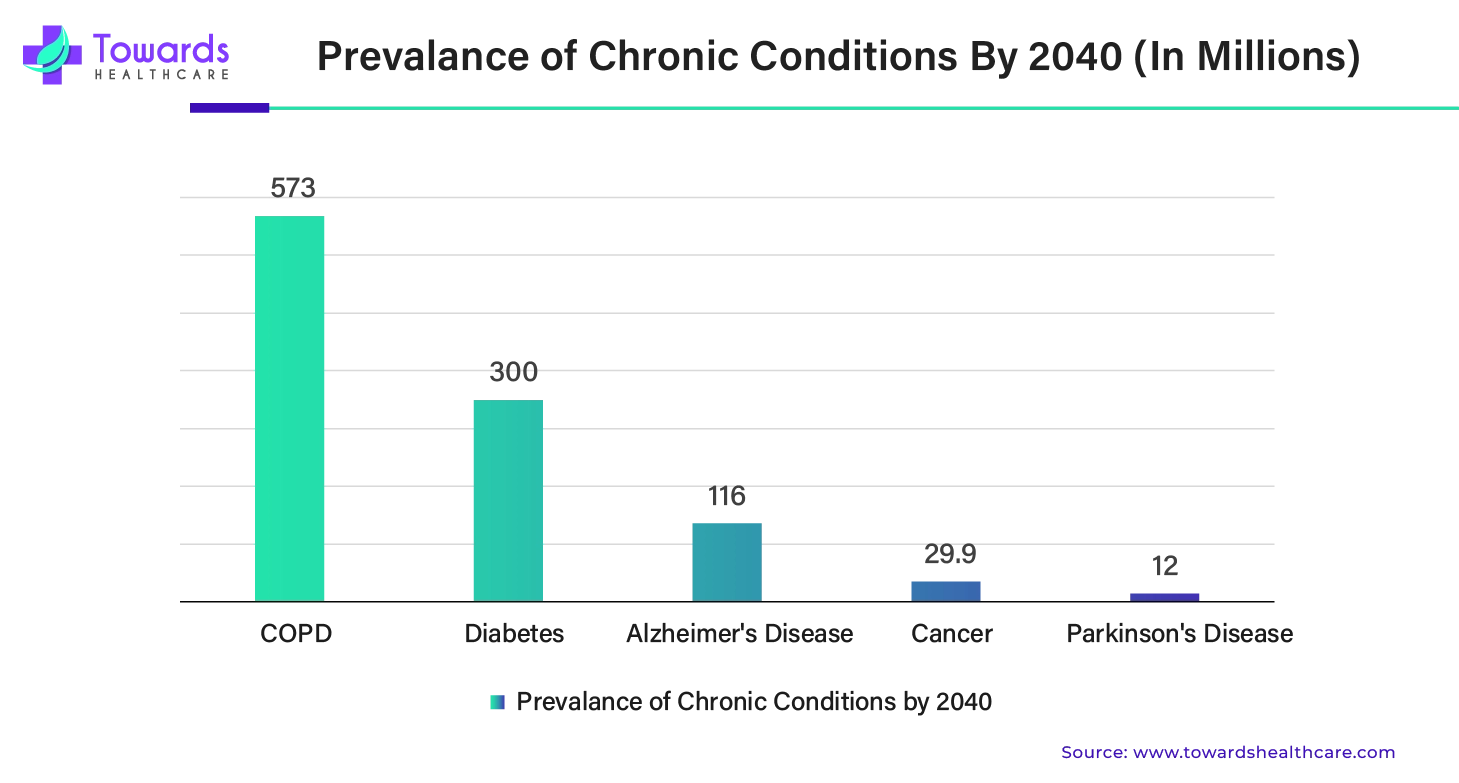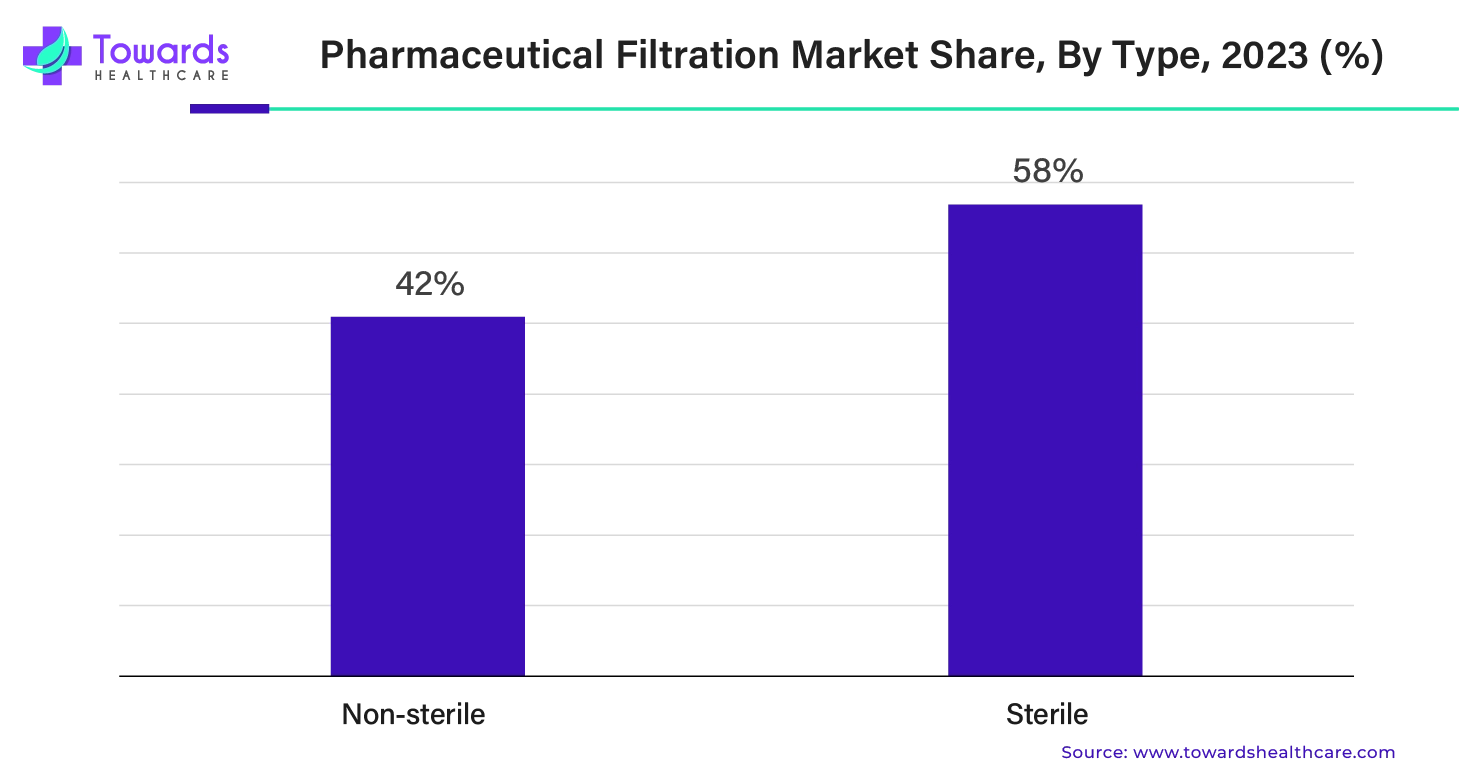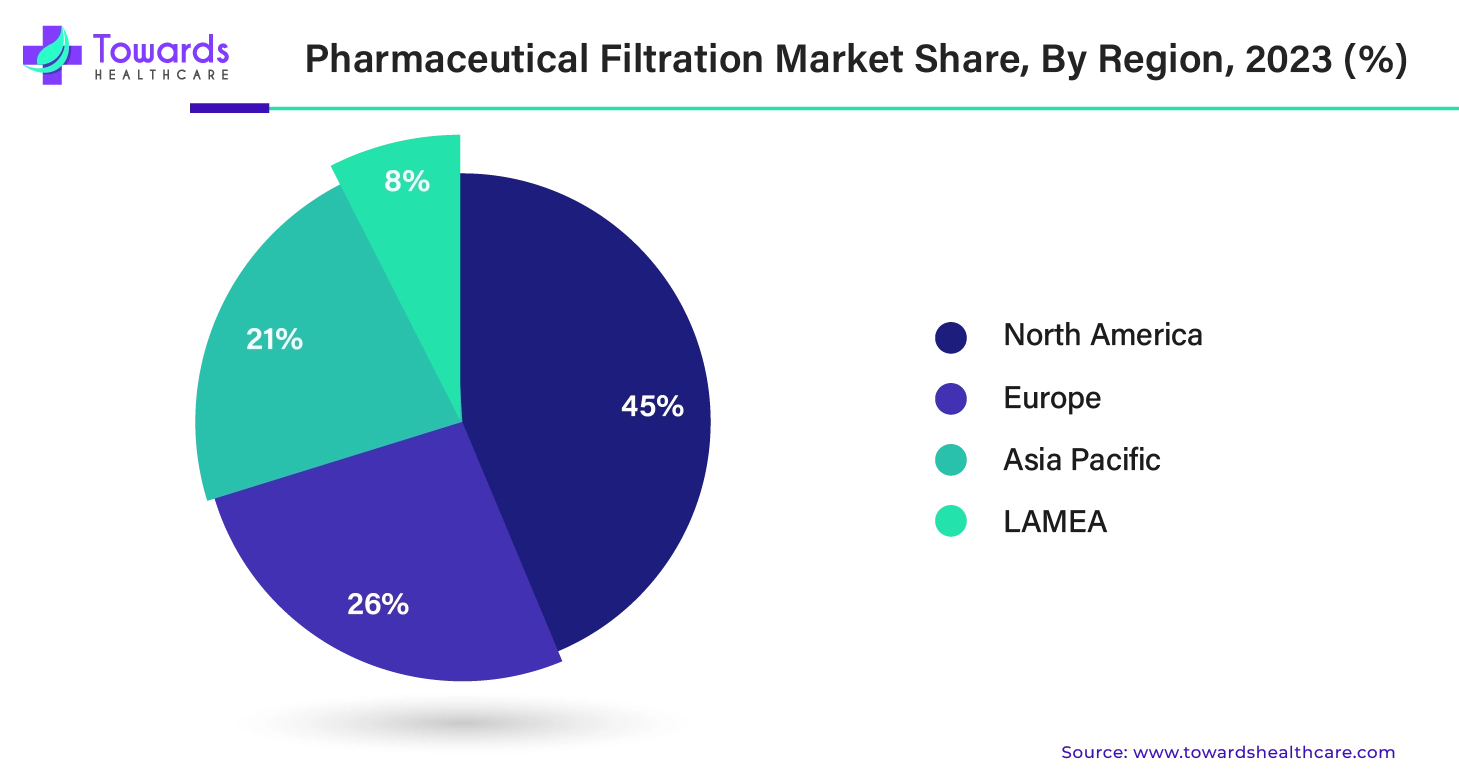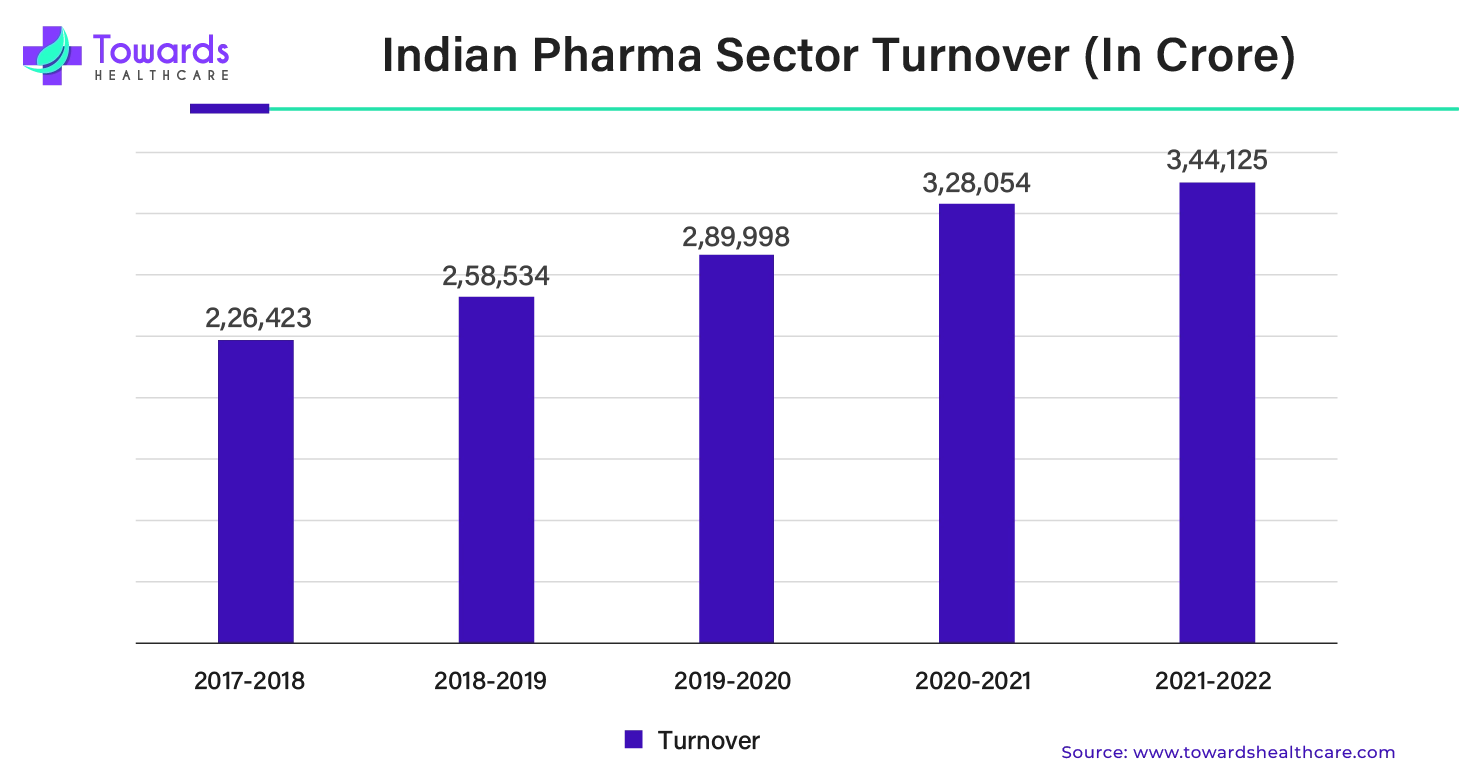June 2025

The global pharmaceutical filtration market size is projected to reach USD 30.09 billion by 2034, growing from USD 14.95 billion in 2025, at a CAGR of 8.08% during the forecast period from 2025 to 2034.

The pharmaceutical sector uses filtration so extensively that it is said to be almost omnipresent, which is why the pharmaceutical filtration market is expanding. It is extensively utilized in the pharmaceutical business due to its versatility, which allows it to be easily adapted to a wide range of demands. Depending on the type of chemical solution being utilized, the pharmaceutical business requires different filtering techniques. There are several approaches to filtering systems used in every facet of pharmaceutical manufacture. Better, more effective filters and ways to use them in the pharmaceutical sector will become available as technology develops, benefiting both old and new filtration techniques.
The number of senior citizens 65 and over is expected to quadruple globally over the next three decades, reaching nearly 1.5 billion by 2050. Because of this, people are seeing an increase in chronic illnesses, and they frequently have many ailments. The rising middle class and sedentary lifestyles that are becoming more popular in developing countries are aggravating this trend by increasing the prevalence of obesity, diabetes, and other expensive medical diseases. Simultaneously, the pharmaceutical business is undergoing a rapid transition due to digitization, big data, and artificial intelligence. These advancements not only help firms treat diseases but also enhance drug research and patient care, opening up new income sources.

It's predicted that by 2030, the global cost of chronic illness will be $47 trillion. At more than $1 trillion annually, chronic illness is a huge financial burden on the American healthcare system.
One significant barrier to the pharmaceutical filtration market's expansion is the enforcement of strict regulations and compliance standards. Pharmaceutical firms must follow certain filtering procedures and maintain strict quality control in accordance with Good Manufacturing Practices (GMP), one of the strict laws that apply to this sector. A barrier to market expansion may be the difficulty, expense, and time required to meet these requirements.
The pharmaceutical sector has witnessed notable breakthroughs and advances in filtering technology in recent times. The manufacturing of pharmaceutical items is now more accurate, efficient, and safe as a result of these advancements. The introduction of novel filter materials and designs, as well as the development of nanofiltration and ultrafiltration processes, are some significant breakthroughs. The development of environmentally friendly and sustainable filtration solutions, the use of sophisticated membrane filtration techniques, and the integration of automation and data analytics are some potential developments in filtration technology for the pharmaceutical business.
The membrane filters segment held the largest share of the pharmaceutical filtration market in 2023. Cartridges, capsules, disks, and other shapes and sizes are among the various forms and sizes of membrane filters. Pharmaceutical membrane filtering systems are essential parts of drug production procedures. These systems filter and separate the targeted drug molecules from contaminants, impurities, and other undesired particles using membranes with particular pore diameters. A number of tests are available to assess the integrity of filters. Filters are helpful for verifying the sterility of finished goods. There are several reasons to implement membrane filtering, including lower operating costs and higher-quality products. Membrane filtering systems are less costly than other alternative systems since they are often extremely basic. A high-quality filtration system's installation also improves the quality of the final product, enabling the distribution of stable and safe goods to consumers.
For instance,
The microfiltration segment dominated the pharmaceutical filtration market in 2023. While centrifugation and depth filtration have largely replaced membrane microfiltration for cell harvesting and primary separation of protein products from cells and cell debris over the past 20 years, membrane microfiltration still plays a significant role in pharmaceutical biotechnology processes, particularly in sterile filtration for a wide range of process streams. There are now more chances to employ membrane microfiltration in biotechnological and pharmaceutical applications because of a number of recent advancements in membrane processes and biopharmaceutical manufacture. These developments include single-use technology, alternating tangential-flow filtration and continuous processing.
The nanofiltration segment is estimated to grow at the fastest CAGR during the forecast period. In the pharmaceutical sector, nanofiltration (NF) is frequently employed for the purification, concentration, and separation of different substances. Pharmaceutical medications, such as antibiotics and other organic pollutants, have demonstrated a high rejection effectiveness for NF membranes, which makes them useful for eliminating these toxins from wastewater. In order to protect public health and lessen the negative effects that these new medications have on the environment, the pharmaceutical business must employ NF technology.
For instance,

The sterile segment dominated the pharmaceutical filtration market with the largest share of 58% in 2023. Pharmaceutical sterilization is a verifiable procedure designed to remove all living bacteria from a product. It is clinically and legally required to sterilize pharmaceutical compositions used for parenteral, ocular, implantation, or any other specialized application. One of the most important and deciding factors for a pharmaceutical product is the choice of sterilization method. Various sterilizing techniques are used in the pharmaceutical industry for materials, tools, and goods with varying physical and chemical properties.
For instance,
The final product processing segment led the pharmaceutical filtration market with the largest share in 2023. Liquid filtration is an essential step in the manufacture of pharmaceuticals that tries to eliminate particles and contaminants from liquids such as water, buffers, or solvents. The aim is to ensure the finished product is safe for human ingestion. Filters are used in the production of pharmaceuticals because of this. Furthermore, filters can assist in removing trash, dirt, and other particles from liquids that may have an impact on the end product's quality. By successfully removing these particles, filters also have a significant impact on guaranteeing that the finished product is pure and satisfies the necessary requirements.
The manufacturing scale segment dominated the pharmaceutical filtration market in 2023. Pharmaceutical firms rely heavily on filtering their products during the production process to guarantee both product safety and quality. Particles and contaminants are frequently eliminated from pharmaceutical goods using large-scale filtering equipment such as membrane filtration systems, centrifuges, and filter presses. In order to separate the intended result from undesired particles, the product is passed through a filter medium under carefully monitored circumstances. This helps the pharmaceutical product reach the necessary levels of purity and quality. Strict regulatory criteria are followed during the filtering process, and it is evaluated and monitored to make sure the finished product satisfies safety and efficacy requirements.
The research and development scale segment is anticipated to grow at the fastest rate during 2024-2033. Filtration operations are carried out on a lesser scale in pharmaceutical research and development than in production. Methods including glass microfibre filtration, membrane filtration, and vacuum filtration are frequently employed. Researchers may isolate and refine compounds using these techniques, eliminate contaminants, and examine the chemical and physical characteristics of the filtered materials. Because it is smaller in scope, it is possible to test several filtering methods quickly and in more detail to see which works best for pharmaceutical procedures. The identification and optimization of filtering technologies prior to large-scale manufacture is a crucial task of this research and development stage of filtration.

North America dominated the pharmaceutical filtration market by 45% in 2024. Leading producers of pharmaceuticals and biopharmaceuticals in the North American market include Merck KGaA, Pfizer Inc., Hoffmann-La Roche Ltd., and Amgen Inc. The market has significant development prospects because of the well-established healthcare infrastructure in the North American area. The pharmaceutical filtration market is expanding thanks in large part to the U.S. and Canada.
About 800 medications aimed at common chronic illnesses were listed in the Pharmaceutical Research and Manufacturers of America study, which was published in 2022. Some of these medications are among the top causes of mortality in the country. Every day in the U.S., millions of patients, families, and communities are impacted by the significant health and financial burden that chronic illnesses impose. All of these illnesses can negatively affect a person's physical and mental health, quality of life, and productivity, even if they have diverse causes, signs, and medical interventions.
According to current estimates, four out of ten individuals in the United States have two or more chronic conditions, and six out of ten persons have one or more. 90% of the $4.1 trillion that the U.S. spends annually on health care is devoted to treating chronic illnesses. Researchers in the biopharmaceutical industry have worked extremely hard over the past 30 years to create innovative therapies that specifically target chronic illnesses in response to the estimated load that these conditions will continue to have on the healthcare system.
Asia Pacific is expected to grow at the fastest rate of 21% during the forecast period. The pharmaceutical and biopharmaceutical industries in Asia-Pacific are seeing an increase in investments and a surge in demand for pharmaceutical filtration products, which means that the region offers attractive potential for the major players in the market. Additional factors supporting the growth of the pharmaceutical filtration market include breakthroughs in healthcare technology, rising rates of illness prevalence, expanding R&D activities, and improvements in healthcare infrastructure.
The Ministry of Industry and Information Technology reports that China now has over 10,000 significant pharmaceutical manufacturing firms and that the nation's capacity to guarantee medical supply has increased. Approximately 4 percent of the nation's overall industrial production is presently made up of the main pharmaceutical corporations' industrial output. Over the last three years, the sector has increased its investment in research and development (R&D), with an average annual R&D spend of more than 20 percent.
Based on the Department of Pharmaceuticals, India's annual report, the country's pharmaceutical sector is renowned for producing low-cost vaccines and generic medications, and it ranks third in the world in terms of volume of pharmaceutical manufacturing. Sixty percent of the world's vaccinations are produced in India, which also supplies 40–70% of the WHO's requirements for the measles vaccine and 90% of the WHO's requirements for the DPT and BCG vaccines. Within the worldwide API industry, 500 API producers account for around 8% of total revenue. For generic medications, India is the main source. 20% of the world's generic drug supply is produced by it, and it produces around 60,000 distinct generic brands in 60 therapeutic areas.

Europe is expected to grow at a notable rate in the foreseeable future. The presence of a suitable manufacturing infrastructure and the need for contamination-free environments in pharmaceutical research and manufacturing augment market growth. The rapidly expanding pharmaceutical and biotechnology sector and the increasing number of startups promote the market. The growing demand for biologics and biosimilars potentiates the need for pharmaceutical filtration. The European government organizations provide funding and launch initiatives for advanced pharmaceutical research and manufacturing.
Germany Market Trends
Germany is the fourth-largest biopharma manufacturing sector in Europe. The German government announced a new Pharma Strategy with the release of the “Strategy Paper 4.0 – Improving the General Conditions for the Pharmaceutical Sector in Germany” paper to improve the conditions for the pharmaceutical industry in Germany.
UK Market Trends
The UK government announced £4.5 billion in funding as part of the Biomanufacturing Fund (BMF) for life sciences manufacturing over five years from 2025 to 2030. The fund will support commercial-scale vaccines and biotherapeutics manufacturing projects to improve the UK’s health resilience for future pandemics.

| Company Name | Cytica |
| Headquarters | Marlborough, U.S., North America |
| Recent Development | In June 2024, Cytiva introduced its Supor Prime sterilizing grade filters, designed to filter biological pharmaceuticals at high concentrations. The newest product in the leading life sciences company's lineup is designed to assist pharmaceutical companies in increasing yields, removing obstacles, and cutting expenses. |
| Company Name | Amazon Filters Ltd. |
| Headquarters | Camberley, United Kingdom, Europe |
| Recent Development | In February 2024, With the debut of sustainable polypropylene versions of its main products, SupaSpun II, SupaGard, Contour, and VisClear II, the Surrey, UK-based company effectively reduced the carbon footprint of each filter. These are widely employed in vital liquid filtering operations in important sectors, including food and beverage, chemicals and coatings, municipal water, oil and gas, and pharmaceuticals. |
By Product
By Technique
By Type
By Application
By Scale of Operation
By Region
June 2025
June 2025
June 2025
June 2025